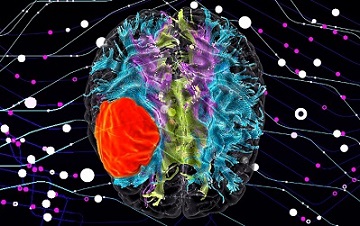AI News: China Unveils New AI Platform That Can Classify Diffuse Gliomas Rapidly And Accurately To Enable Timely Treatment Of Specific Brain Cancers
Nikhil Prasad Fact checked by:Thailand Medical News Team Nov 27, 2023 2 years, 3 weeks, 4 days, 2 hours, 52 minutes ago
AI News: In a groundbreaking development, a research team led by Professor Dr Li Zhicheng from the Shenzhen Institute of Advanced Technology (SIAT) of the Chinese Academy Sciences-China has introduced a cutting-edge AI platform designed to revolutionize the diagnosis and classification of adult-type diffuse gliomas. These malignant brain tumors, including astrocytoma, oligodendroglioma, and glioblastoma, represent a significant challenge in neuropathology due to the necessity of combining histological features and molecular characteristics for accurate diagnosis. The platform covered in this
AI News report, developed through deep learning technology, aims to automate this complex process, enabling swift and precise identification of glioma types, ultimately facilitating timely and targeted treatment.
 The Challenge
The Challenge
Current diagnostic methods for glioma types involve a labor-intensive and expensive combination of histological examination and molecular testing. This intricate process requires skilled neuropathologists to scrutinize hematoxylin and eosin-stained (H&E) slides, leading to potential interobserver variations. Additionally, obtaining molecular information often involves invasive surgical procedures, making it economically burdensome for patients. The gigapixel-level resolution of whole-slide images (WSIs) poses computational challenges for traditional convolutional neural networks (CNNs).
The Innovative Solution
The research team's integrated diagnosis model eliminates the need for manual annotation and molecular testing by directly analyzing annotation-free standard whole-slide pathological images. Leveraging deep learning, the model can classify adult-type diffuse gliomas strictly adhering to the fifth edition of the World Health Organization (WHO) Classification of Tumors of the Central Nervous System (CNS) released in 2021. This breakthrough offers a potential solution to the time-consuming and costly nature of current diagnostic procedures.
Model Development and Validation
The deep learning model was trained and validated on a diverse dataset comprising 2,624 patient cases from three different hospitals. The model's effectiveness was measured in terms of classification accuracy, sensitivity to different glioma types and grades, and its ability to distinguish between genotypes with shared histological features. Experimental results demonstrated high performance, with an area under the receiver operator curve exceeding 0.90 for classifying major tumor types, identifying tumor grades within types, and distinguishing genotypes with overlapping histological features.
Detailed Study Overview
The research to test the developed AI Platform was conducted at the First Affiliated Hospital of Zhengzhou University in China and focused on developing a neuropathologist-level integrated diagnosis model for the automatic classification of diffuse gliomas. The study's abstract highlights the model's training on a cohort of 1,362 patients, validation on a cohort of 340 patients, and testing on an internal cohort of 289 patients and two external cohorts of 305 and 328 patients, respectively. The model'
s ability to learn imaging features containing both pathological morphology and underlying biological clues was emphasized.
Discussion of the Integrated Diagnosis Model
The study addressed key challenges in computational pathology by utilizing weakly supervised learning techniques, eliminating the need for extensive manual annotation. The model achieved high performance by predicting tumor grades and types directly from pathological images without molecular information. The integration of large datasets, including 644,896 patch images from 1,362 patients, ensured the model's generalization ability across diverse cohorts.
Comparison with Previous Work
The research highlighted the strengths of the proposed model compared to previous CNN-based diagnostic models for gliomas. Notably, the model achieved integrated classification according to the 2021 WHO standard, incorporating comprehensive molecular information such as IDH mutation, 1p/19q codeletion, CDKN2A homozygous deletion, TERT promoter mutation, EGFR amplification, and Chromosome 7 gain/Chromosome 10 loss.
Advantages of Clustering-Based CNN Model
The clustering-based CNN model presented in the study demonstrated superior performance by avoiding manual annotation burdens and selectively fusing discriminative information from multiple relevant patches. The model showcased its capability to recognize both pathological morphology and imaging patterns reflecting underlying genomic alterations, crucial for integrated diagnosis.
Limitations and Future Directions
While the study presented encouraging results, three limitations were acknowledged. The need for a larger, international, multicenter, and multiracial dataset was emphasized. Additionally, addressing scanner variability and stain normalization challenges was identified as a future area of focus. Lastly, further preclinical experimental work is essential to elucidate the biological interpretability of the deep-learning model.
Professor Li Zhicheng envisions the integration of this AI model into clinical scenarios for automated and unbiased classification of adult-type diffuse gliomas. The research team is committed to enhancing the model by incorporating multi-center, multi-racial datasets, ensuring its applicability across diverse patient populations.
Conclusion
The presented CNN model represents a significant leap forward in the automated and unbiased integrated diagnosis of adult-type diffuse gliomas, aligning with the 2021 WHO classification. This groundbreaking technology has the potential to revolutionize clinical practices by streamlining the diagnostic process, ultimately contributing to more timely and targeted treatment strategies for patients with malignant brain tumors.
The study findings were published in the peer reviewed journal: Nature Communications.
https://www.nature.com/articles/s41467-023-41195-9
For the latest
AI News in the Medical and healthcare Industry, keep on logging to Thailand Medical News.
